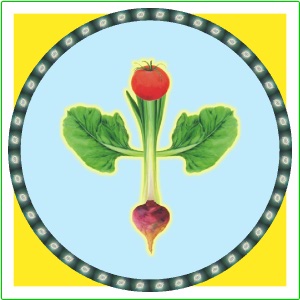

Three Groups of Vegetables
Help for Composing Threefold Vegetable Dishes

Introductory Reading:
IIn the great majority of cultivated vegetables it is possible to recognise to which part of a plant they belong: Is it the root, or stem, or leaves, or blossom, or fruit part, or seeds of a plant? [1] But there are a few vegetables where this is not so easy. For example, onions are swollen stems (as is visible from the similar structure of the fennel bulb) but grow under the earth as roots do. Such plants are plants in between, having some characteristics of both groups. For that reason they are listed in one group with the additional group of which they have some characteristics in the brackets. For example, onions are listed as root vegetable group with stem in brackets.
 |
 |
 |
| Root | Stem – Leaf | Flower – Fruit – Seed |
|
Beetroot Carrot Celeriac Garlic (stem) Jerusalem Artichoke Light Root Parsnip Potato (stem) [2] Radish Salsify Swede Sweet Potato Turnip |
Asparagus Brussels Sprouts Broccoli Cabbage Cauliflower (flower) Celery Chard Chicory Chinese Cabbage Collard Greens Endive (Escarole) Fennel Garlic (root) [3] Kale Kohlrabi Leek Lettuces Onions (root) Pak Choi Radicchio Rhubarb Rocket Savoy Cabbage Shallot (root) Spinach Spring Greens Water Cress |
Artichoke Aubergine Broad Beans Beans Courgette Cucumber French Beans Lentils Marrow Peas Pepper Pumpkin Runner Beans Soya Beans Squashes Sweet Chestnut Tomato |
All fruits, seeds, and nuts belong to the Flower-Fruit-Seed group. There is one notable exception: peanuts. [4] They develop their seeds under the earth. This means that they are seeds, but with some root characteristics.
The group Flower-Fruit-Seed also contains seeds which we can use instead of cereals, such as buckwheat, amaranth, quinoa, etc. These plants form typical flowers, while the flowers of cereals are – with the exception of maize – very similar to other parts of the cereal ear.

NOTES